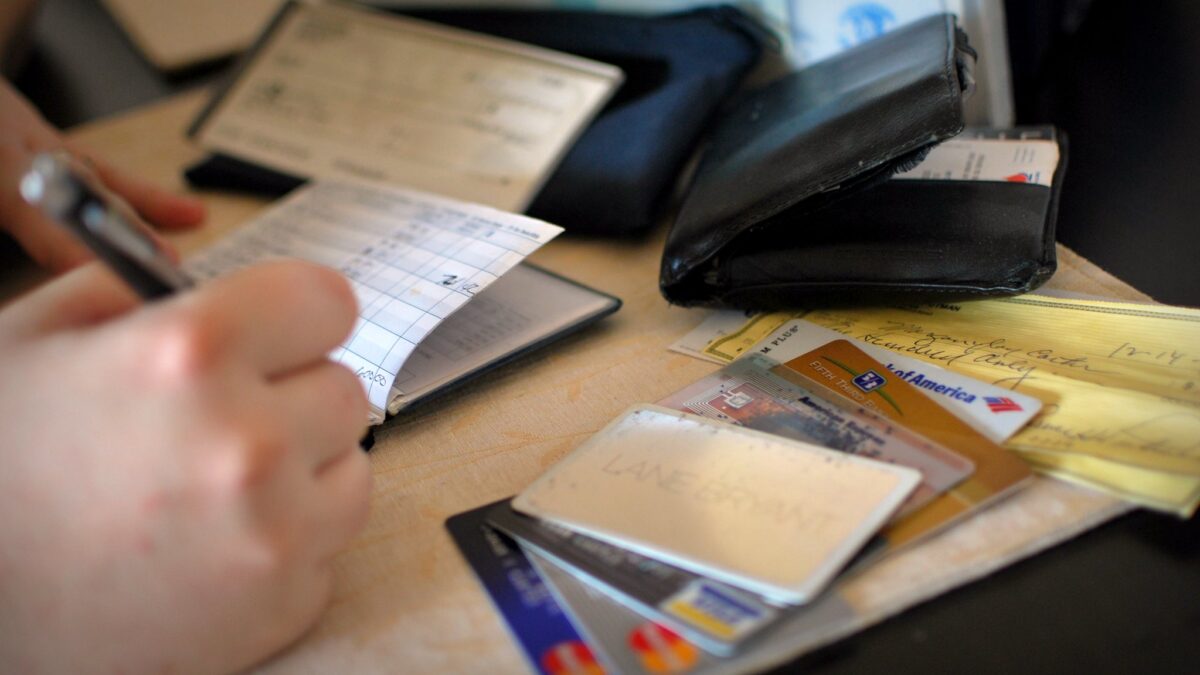
Some observers, reading news about the latest report on runaway inflation, might blame the Biden administration’s free-spending policies for devaluing the dollar. But that simplistic assumption both ignores other sources and understates the problems.
Much of the responsibility—and the blame—lies within the Marriner Eccles Building in Washington, home of the Federal Reserve. As a new PBS “Frontline” documentary explores, the Fed has spent the better part of the past dozen years printing money out of thin air, in the hopes of generating economic growth.
The Fed’s quantitative easing programs have indeed generated growth, but more in the form of Wall Street profits than anything else. Sadly, the after-effects of its policies—from the burgeoning spike of inflation to massive increases in both asset prices and debt—could linger for decades.
Wall Street vs. Main Street
The “Frontline” special goes back to the financial crash of 2008, discussing how the Fed injected trillions of dollars into the economy. By using newly created money to buy up assets like mortgage-backed securities and government bonds, the Fed hoped to stabilize the banking system. A second round of easing, or “QE2,” begun in late 2010, intended to generate additional economic growth and recover jobs lost during the 2008-09 crash.
But quantitative easing encountered problems from the start. Despite receiving piles of cheap cash from the Fed, most banks didn’t use the new money to lend to businesses. By choosing to sit on the cash instead, the banks limited the impact that quantitative easing would have on small firms, and on the “Main Street” portion of the economy.
Outside the financial sector, large companies used the cheaper interest rates created by quantitative easing to issue massive amounts of corporate debt. But as with the banks, much of that debt went not to new enterprises that could increase innovation and improve productivity, but programs like share buybacks.
A conservative would not object to share buybacks, per se. But big corporations using artificially cheap money provided by the Fed to goose a stock’s price doesn’t represent the free market at all, only the worst excesses of crony capitalism.
Average Americans Better Off?
Some observers, like the ironically named Neel Kashkari, president of the Minneapolis Fed, told “Frontline” that they focused on quantitative easing’s positive effects on working-class families, rather than the effect on Wall Street.
Kashkari said he maintained his focus on “the men and women in America who are trying to find work and who want to have higher earnings and who deserve higher earnings. If we are benefiting them by helping them find work and helping them have higher wages, I will take that trade off.”
But does quantitative easing really benefit the working class? Consider that in June, real average hourly earnings fell by 0.5 percent for the month. In other words, a worker earning $50,000 at the beginning of the month could purchase goods worth only $49,750 by the end of the month, because prices rose faster than wages.
Contra Kashkari’s argument, a sustained increase in inflation attributable in part to the Fed’s easy money policies following last year’s economic lockdowns wouldn’t help the working class have higher wages. Instead, it would harm the working class, and the economy as a whole.
Easy Money a Powerful Narcotic
Andrew Huszar, who worked at the Fed and helped implement its first round of quantitative easing following the financial crash, said he ended up “incredibly demoralized” by the failure of its tactics to affect the broader economy:
I was a true believer of the Fed, and I worried about what this [i.e., the second round of quantitative easing] meant in terms of the future, about how much more the Fed would double down, and how addicted Washington and the markets would become to this extraordinary stimulus.
That word—addiction—powerfully describes markets’ utter dependence on cheap money from the Fed, and the danger the central bank, to say nothing of the broader economy, face after the pandemic.
With trillions and trillions of dollars sloshing around the system, ending markets’ dependence on Fed-created money could cause another financial crisis. The infamous “taper tantrum” of summer 2013, when Wall Street sold off as soon as then-Fed Chairman Ben Bernanke announced the bank was contemplating increases in interest rates, provides a warning about what markets could face whenever the Fed decides to end its money-printing regime this time.
In this case, the moves the Fed used—even more aggressive than those during the financial crash—means risk lurks around every corner. As Richard Fisher, formerly the head of the Dallas Fed, told PBS: “Cheap money is the fuel for a financial speculator and for a financial investor.” With prices skyrocketing on Wall Street, bond markets, and in the housing sector, the end of that cheap money could cause asset bubbles to burst, with potentially significant consequences.
Dangerous Experiment
The “Frontline” special on several occasions used the word “experiment” to describe the Federal Reserve’s actions in printing money to rescue (or bail out, depending on one’s perspective) the financial sector and the economy.
It’s an experiment that comes with a noteworthy, arguably fatal, conceit: That a group of economists and bankers can micromanage the nation’s economy—using these tools to revitalize growth during crises, then unwinding them without causing undue harm via inflation, asset crashes, or a similar calamity.
But the fact that a Fed “true believer” like Huszar grew to find the central bank’s tools both ineffective and potentially harmful reinforces the law of unintended consequences. As with the story of the Tower of Babel, trying to run the world starts with the best of intentions, but it often ends in tears.









